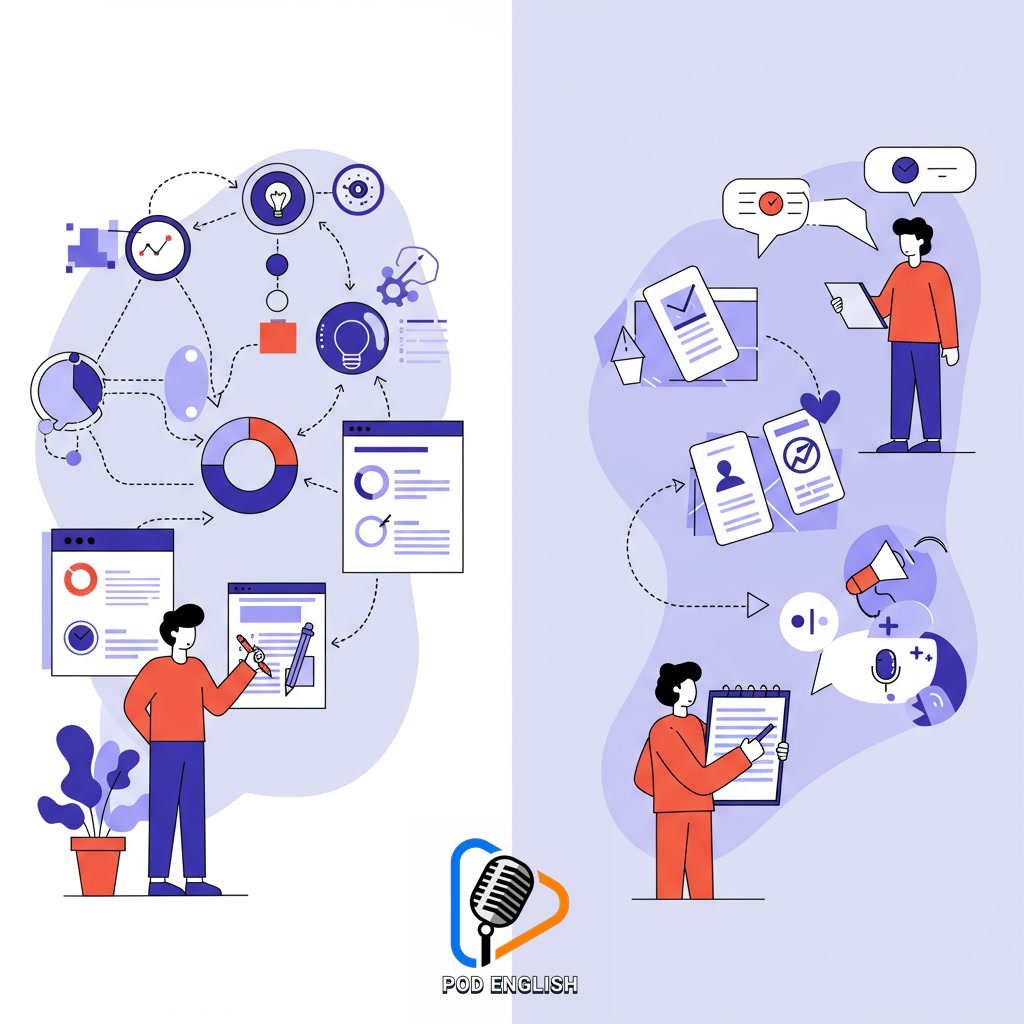Learn English
Boost Your English Learning Using Data Analytics

This content explores how leveraging data analytics can significantly enhance the process of acquiring English skills. It discusses methods for tracking progress, identifying areas for improvement, and optimizing study strategies based on collected data. By analyzing personal patterns and performance metrics, individuals can gain insights to make their English practice more effective and targeted. This approach offers a data-driven pathway to accelerate proficiency and achieve language goals efficiently.
Table of Contents
- Section 1: Introduction: Why Data Analytics for English Learning?
- Section 2: Identifying and Collecting Your English Learning Data
- Section 3: Analyzing Your Learning Performance and Patterns
- Section 4: Turning Data Insights into Actionable Learning Strategies
- Section 5: Tools and Resources for Data-Driven English Learning
- Section 6: Conclusion: Boosting Your English Learning Journey with Data
Section 1: Introduction: Why Data Analytics for English Learning?
Welcome to exploring a new way to boost your English skills! Often, language learning can feel like a journey without a clear map. You might study hard but wonder if you’re truly improving or focusing on the right things. This is where data analytics comes in. Imagine having personalized insights into your learning process. By tracking your practice, identifying common errors, and analyzing your study time, you can gain a clear picture of your strengths and weaknesses. This data isn’t just numbers; it’s powerful feedback that allows you to tailor your learning strategy, making your efforts more targeted and effective than ever before. It transforms learning from a guessing game into a guided, data-driven path to fluency.

Section 2: Identifying and Collecting Your English Learning Data
To effectively use data analytics in your English learning journey, the crucial first step is identifying what kind of information is valuable and then finding ways to collect it consistently. Think about what aspects of your English skills you want to track: vocabulary acquisition, grammar accuracy, pronunciation improvement, reading speed, listening comprehension, or fluency in speaking. Data sources can include scores from practice tests or quizzes, lists of words you struggle with, recordings of your spoken English, notes on common grammatical errors you make, or logs of how much time you spend on different activities. Collecting this data might involve using features in language learning apps, keeping a dedicated notebook or digital document, or simply making a conscious effort to note down observations about your performance. This process might seem small, but gathering this raw information creates the foundation for understanding your learning patterns.

Section 3: Analyzing Your Learning Performance and Patterns
Okay, you’ve collected data on your English learning activities and performance. Now comes the critical step: analyzing it to understand what it means. This involves examining the information you’ve gathered to identify patterns, trends, and specific areas of strength and weakness. Look at the types of errors you make most frequently in speaking or writing. Check your scores on practice tests over time to see if you’re improving in specific skills like reading comprehension or listening. Analyze how much time you’re dedicating to different activities and correlate that with your progress in those areas. Are there particular topics, grammar points, or vocabulary sets you consistently struggle with? By systematically reviewing this data, you gain valuable insights into your learning process, allowing you to move beyond guessing and make informed decisions about where to focus your efforts for maximum impact.

Section 4: Turning Data Insights into Actionable Learning Strategies
Okay, you’ve analyzed your English learning data and gained some insights. The next crucial step is translating these insights into concrete, actionable strategies that actually change how you learn. For example, if your data shows you consistently struggle with the past perfect tense, your action is to dedicate specific study sessions to reviewing and practicing that grammar point. If the analysis reveals you spend too little time speaking compared to reading, your strategy might be to join a conversation group or find a language partner. Perhaps your data indicates you learn best in the morning; the action is to schedule your most challenging English tasks for that time. This is where the real improvement happens: using the data not just to understand your weaknesses and strengths, but to actively modify your learning plan and habits for maximum effectiveness. It’s about moving from knowledge to practical application in your daily study routine.

Section 5: Tools and Resources for Data-Driven English Learning
Now that you understand the value of data-driven insights, let’s explore the practical tools and resources available to help you collect and analyze your English learning data. Modern language learning apps often come with built-in progress tracking, showing metrics like time spent, vocabulary mastered, or lessons completed. Beyond these, dedicated learning journals, whether digital or physical, allow you to log study sessions, note difficulties, and track specific error patterns. Spreadsheet software can be used to create custom trackers for vocabulary lists, grammar points needing review, or test scores. Online grammar checkers and pronunciation analysis tools provide instant feedback, generating data on common mistakes. Utilizing these tools consistently provides the raw data necessary for meaningful analysis and informed strategy adjustments.

Section 6: Conclusion: Boosting Your English Learning Journey with Data
In conclusion, embracing data analytics is a powerful strategy to truly boost your English learning journey. By consistently tracking your progress using the tools discussed, you gain valuable insights into your strengths and weaknesses. Analyzing this data allows you to identify specific areas needing more attention, tailor your study methods, and make informed decisions about what to focus on next. This data-driven approach transforms learning from a general activity into a targeted, efficient process. It empowers you to optimize your practice, celebrate measurable achievements, and stay motivated as you move towards fluency. Make data your ally in mastering English, and watch your progress accelerate.














